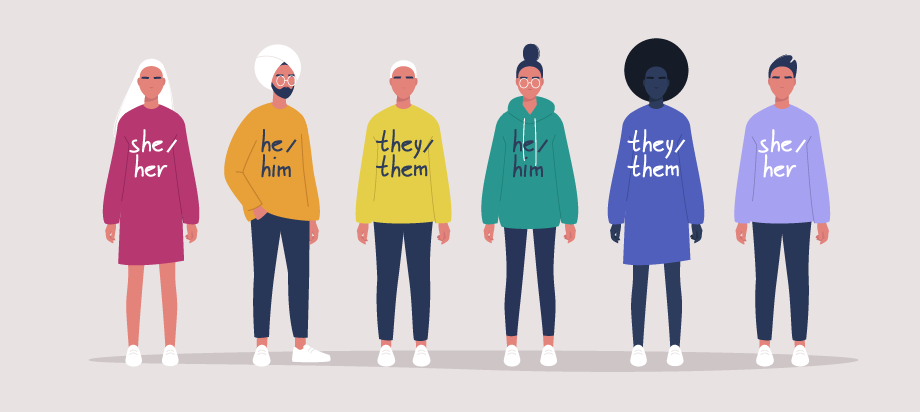It’s officially Pride Month—a time for celebrating authenticity, inclusion, and humanity at its most basic level.
And while festivals, parties, and office memos are powerful ways to bring diverse communities together, some companies allow LGBTQIA+ activism to fizzle by the end of the month. What remains is a low show of support for LGBTQIA+ employees and evidence of rainbow washing, which can permanently hurt recruitment, retention, and company culture.
As themes of inclusion and empathy begin to take root in organizations large and small, today’s employees are calling on their employers to practice active allyship all year long. For queer employees, the fight for visibility and equality doesn’t end on June 30th—and neither should their employers’ allyship.
To avoid rainbow washing and effectively prioritize the wellbeing of queer workers, employers must view active allyship as an ongoing priority rather than a month-long project—all the while reshaping company culture to be more inclusive, supportive, and safe for all.
What Is Rainbow Washing and What Does It Look Like?
For years, progressive companies like Target have shown support for the LGBTQIA+ community by displaying rainbow-themed merchandise during Pride Month.
Often attracting positive press and recognition in the short term, these companies have also faced backlash for packing away their merchandise at the end of the month and pausing public displays of support—a phenomenon commonly known as “rainbow washing.”
Subtle hints of rainbow washing can manifest in a variety of ways during Pride Month—from using the Pride flag or rainbow colors in brand logos to voicing statements of inclusivity and equality on social media without authentic actions to back them up.
While these actions can appear meaningful on the surface, they often operate under the guise of “performative allyship”—when companies don’t have long-term policies, practices, or initiatives that align with the claims or beliefs they make.
But performative allyship can go beyond public displays of support, sometimes surfacing in hiring practices. In fact, according to SHRM, 44% of candidates have, at some point in time, felt that an employer's primary interest in them was to fulfill a diversity hiring quota or goal, making the recruitment of LGBTQIA+ employees seem disingenuous.
DEI Is the Goal—Mindset Is the Path to Get There
Whether it’s witnessed during hiring practices or in surface-level displays of support, rainbow washing can directly and negatively affect the wellbeing of queer employees.
As a result, less than half of employees who identify as part of the LGBTQIA+ community believe that their organizations are “friendly and supportive” towards them—and that figure drops to 30% when talking specifically about transgender and non-binary employees.
While employers can prioritize diversity, equity, and inclusion to protect queer employees, workplaces must go beyond verbal commitments and run-of-the-mill best practices. Pride-themed emails and resources promoting inclusion are stepping stones in the right direction, but for LGBTQIA+ support to maintain momentum, organizations must adopt an open and empathetic mindset before drafting policies and initiatives.
Meaningful participation in Pride involves an active and purposeful demonstration of allyship every day of the year. Genuinely engaging with and seeking the input of LGBTQIA+ employees lays the groundwork for a safe, supportive, and inclusive workplace culture, which leads to:
- Increased job performance and productivity
- Higher employee morale and engagement
- Improved recruitment and retention
As a result, when employees feel safe, accepted, and seen at work, they don’t have the added pressure of battling workplace stigmas and avoiding judgment—allowing them to be present, engage with work tasks, and prioritize their own wellbeing.
Laying the Groundwork for an Inclusive Company Culture
While the Equality Act prohibits discrimination based on a person's sex, sexual orientation, or gender identity, simply having a bill is not enough to discourage discriminatory behavior.
Employers have a responsibility to create environments where all employees—especially members of the LGBTQIA+ community—feel seen, included, valued, supported, and safe.
- Clear Policies That Protect LGBTQIA+ Employees
- Frequent Bias Training
- The Value of Safe Spaces
- LGBTQIA+ ERGs with Leadership Support
Revising old policies to be more inclusive is the first step to protecting LGBTQIA+ employees and setting the foundation for a psychologically safe work culture. Anti-harassment, bullying, and nondiscrimination policies that specifically outline workplace behavioral expectations are a great way to show active support year-round.
To take it a step further, conduct an inclusion audit to ensure there are no inherent biases getting in the way of organizational change. Beyond doing an inventory of current initiatives, it may also help to ask the following questions:
- How inclusive are our health-related forms? Do we offer a section for pronouns?
- Is there a process for changing names, pronouns, or gender identities?
- How are families defined, and what naming conventions are used to describe spouses and children?
Additionally, updating policies like dress codes to be neutral and less gender-normative can help LGBTQIA+ employees feel more comfortable at work. Requiring or prohibiting individuals from wearing specific clothing items or accessories can reinforce employees’ feelings of unhappiness and depression as it pertains to their identities, which ultimately affects their wellbeing at work.
By continually updating policies based on employee feedback and actively communicating expectations to the entire organization, employers can demonstrate their allyship to employees and commit to ongoing progress.
According to Culture Amp, 46% of gay, queer, and trans employees are still closeted at work.
The fear of being stereotyped and making colleagues uncomfortable are very real concerns for some LGBTQIA+ employees, who feel that hiding is necessary to keep the peace. Considering more than half of non-LGBTQIA+ employees say they would feel “very uncomfortable” working with an LGBTQIA+ colleague, this is a valid worry and shows clear gaps in how organizations prepare their teams to be accepting and inclusive.
Personal biases—whether conscious or unconscious—prevent LGBTQIA+ employees from existing authentically and bringing their full selves to work. Routine bias training can expose mental shortcuts that lead to snap judgments and inaccurate character assessments.
By continually holding high-quality trainings, employers can ensure their workforces expand their understanding and practice empathy.
Practicing active allyship in the workplace allows employers to create safe spaces for queer employees to be their authentic selves. Even the smallest details can lead to tremendous positive change and make work feel safer and more welcoming.
For example, encouraging the use of personal pronouns in email signatures can help LGBTQIA+ employees feel seen and valued. However, while some individuals may feel comfortable sharing these personal details, others who are not “out” may need a little more time to warm up to the idea.
Creating safe spaces that don’t force participation gives employees the agency to decide when they feel comfortable expressing their authentic selves. Providing clear and intentional communication about why safety is important allows employees to feel seen and acknowledged wherever they are on their wellness journeys.
The LGBTQIA+ community is known for being endlessly supportive and understanding. However, employees may feel isolated if there are no other apparent community members on their teams or reflected in leadership.
Creating an ERG for LGBTQIA+ employees can bring that strong sense of community into the workplace, giving individuals a safe space to share stories and build empathy within the company's culture.
But that doesn’t mean companies should create an ERG and expect LGBTQIA+ employees to do all the work. It’s essential to define ERG expectations and strike a balance between leadership and ERG members so they feel appreciated for their contributions.
Navigating diversity, equity, inclusion, and belonging in the workplace can be challenging—but it’s paramount that a supportive culture be built on authenticity. Employers must go beyond adopting a rainbow logo and demonstrate active allyship for more than just 30 days of the year.



